7 Microsoft Fabric Use Cases in Data and Analytics

Share this article
Microsoft Fabric integrates cloud-based data analytics and integration services like Microsoft Power BI, Azure Synapse, and Azure Data Factory into a single software-as-a-service (SaaS) platform.
While the solution is still evolving, some use cases - data integration, warehousing, analytics, BI, and more - have already emerged.
In this article, we’ll look at the various Microsoft Fabric use cases and see how they address common data management challenges.
Table of contents #
- Exploration of the Microsoft Fabric use cases
- Data warehousing
- Data integration
- Data science and machine learning
- Real-time analytics
- Predictive analytics
- Business intelligence and reporting
- Data governance and security
- The future of Microsoft Fabric
- Wrapping up
- Microsoft Fabric use cases: Related reads
Exploration of the Microsoft Fabric use cases #
Microsoft Fabric is a unified layer for data and analytics workflows. Some of the top use cases include:
- Data warehousing
- Data integration
- Data science and machine learning
- Real-time analytics
- Predictive analytics
- Business intelligence and reporting
- Data governance and security
It’s important to note that several capabilities of Microsoft Fabric are still under development. These are merely preliminary use cases and they will evolve along with the development of Fabric.
With that said, let’s deeper into each use case.
1. Data warehousing #
Data warehousing involves storing, managing, and analyzing large volumes of structured data to extract valuable insights.
Microsoft Fabric enhances this function with its Synapse-powered data warehousing. Synapse, a part of the Microsoft Azure family, is an analytics service that allows businesses to run complex queries on their data.
With Fabric’s integration of Synapse, businesses can manage and analyze their warehouse data.
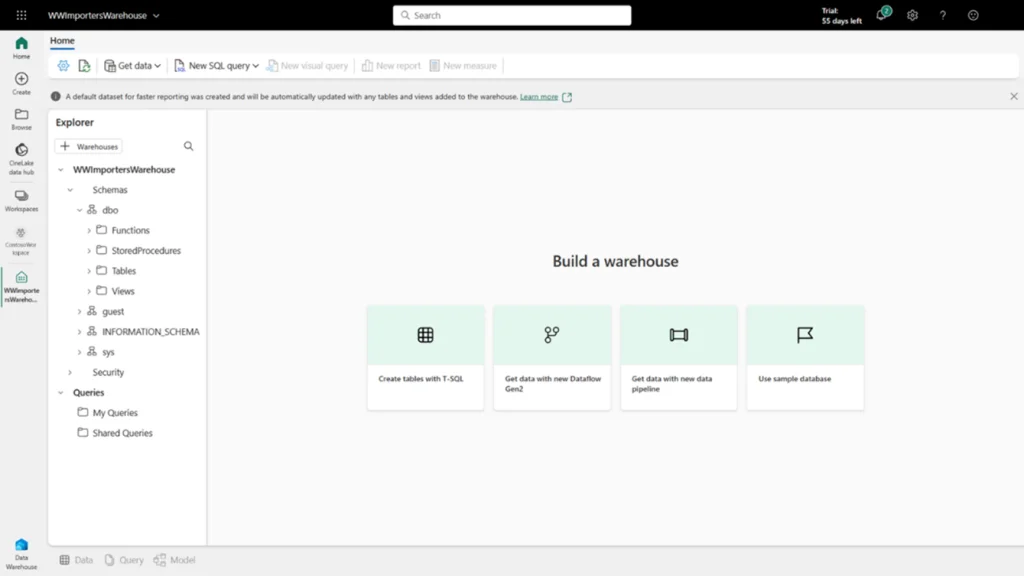
Synapse Data Warehouse Explorer in Microsoft Fabric - Source: Microsoft.
2. Data integration #
Data integration is the merger of data from disparate sources to extract meaningful and valuable information, thereby offering a holistic view of a company’s data.
Microsoft Fabric’s Data Factory enables data integration by combining the capabilities of Power Query and Azure Data Factory.
Power Query helps in cleaning and organizing data prior to analysis, while Azure Data Factory acts as a traffic controller — managing and directing data flow from diverse sources to a designated destination.
As such, data practitioners can explore a wide range of data sources and use the data for decision-making.
Data Factory also offers scalable cloud-based services for data movement and transformation to address data factory and ETL (Extract, Transform, Load) scenarios.
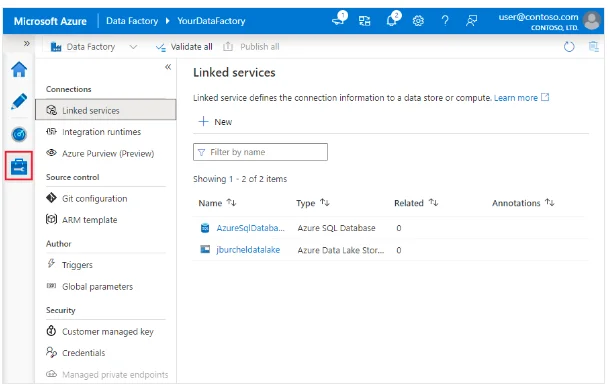
Azure Data Factory management hub - Source: Microsoft.
How Hitachi and Delphix solve their data integration needs with Microsoft Fabric
Hitachi Solutions could integrate their data sources seamlessly using Data Factory in Fabric. As Simon Nuss, Data VP at Hitachi Solutions, puts it:
“With Microsoft Fabric, there is no need to stitch together different products to form a Frankenstein monster.”
Another example is Delphix, which has partnered with Microsoft to solve their diverse data integration needs. According to Jedidiah Yueh, Delphix Founder, and CEO:
“In collaborating with Microsoft to bring our multi-cloud data masking solution to Microsoft Fabric, Delphix is proud to deliver a comprehensive way to de-risk the cloud while accelerating the path from data to transformation.”
3. Data science and machine learning #
The data science experience provided by Fabric comprises several features that are built natively for collaboration, data acquisition, sharing, and consumption.
Fabric supports data scientists throughout their project lifecycle from data acquisition and cleansing to model training and scoring.
It enables data scientists and data-driven organizations to ingest data from various sources, clean and transform data using Apache Spark, train machine learning models, and visualize predictions using Power BI.
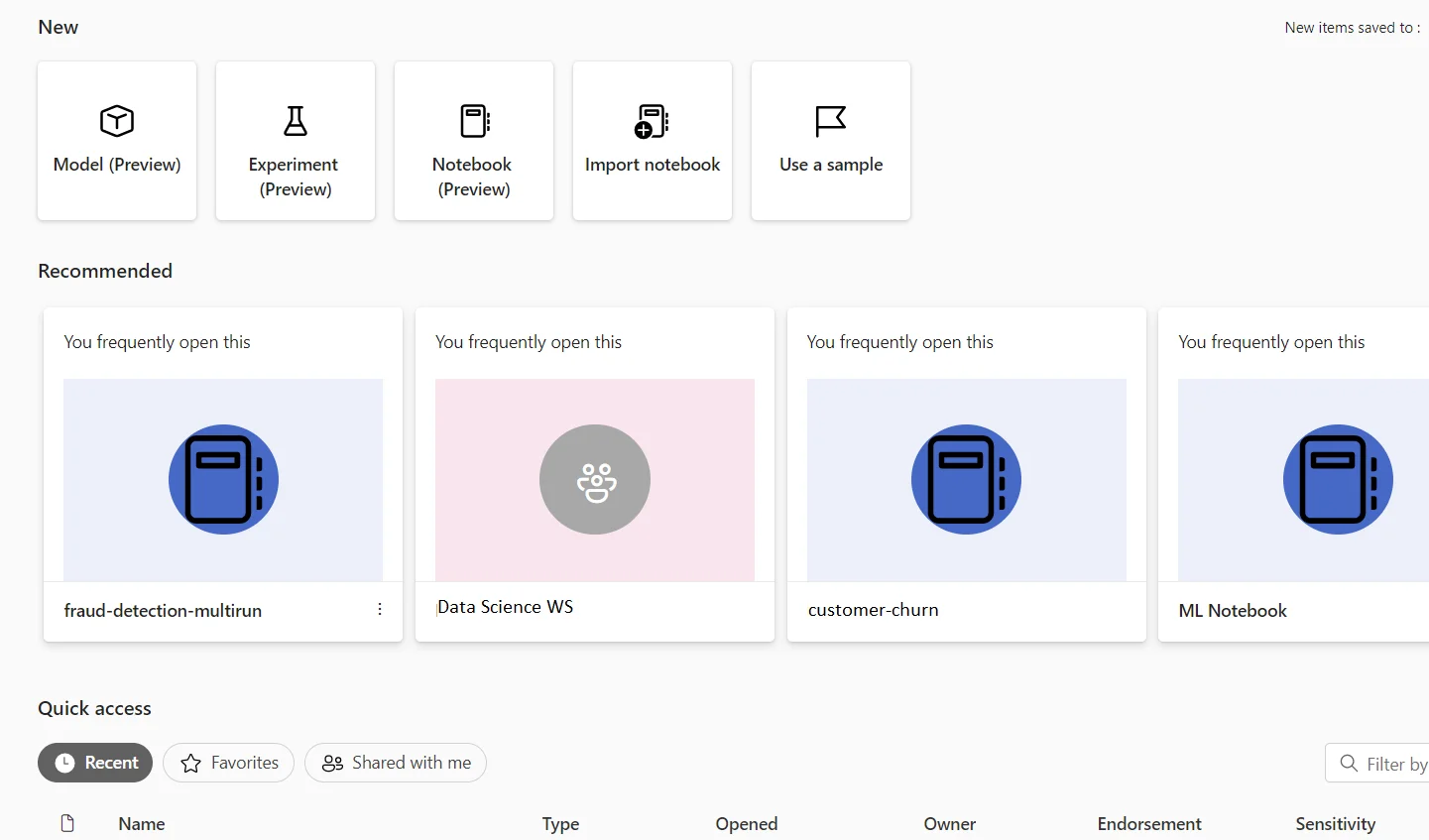
Microsoft Fabric’s data science experience - Source: Microsoft.
How T-Mobile uses Microsoft Fabric to generate insights
T-Mobile, a major wireless communications services provider in the United States, uses Fabric to query across the lakehouse and warehouse from a single engine. This ability allowed the company to save three minutes on every job.
As Geoffrey Freeman, MTS (Data Solutions and Analytics) at T-Mobile, highlighted:
”We think that Fabric’s upcoming abilities will help us eliminate data silos, making it easier for us to unlock new insights into how we show our customers even more love.”
4. Real-time analytics #
Real-time analytics is the use of data and related resources to analyze and draw insights from data as it enters a system.
One of Microsoft Fabric’s key offerings, Synapse Real-Time Analytics, is used for collecting data from streaming sources. With Fabric’s architecture, data from various sources can be pulled into a central repository, OneLake, facilitating immediate analysis and insights.
In the future, Fabric will also be equipped with Azure OpenAI Service (i.e., a platform provided by Microsoft that allows developers to use advanced AI capabilities), and GPT-powered Copilot.
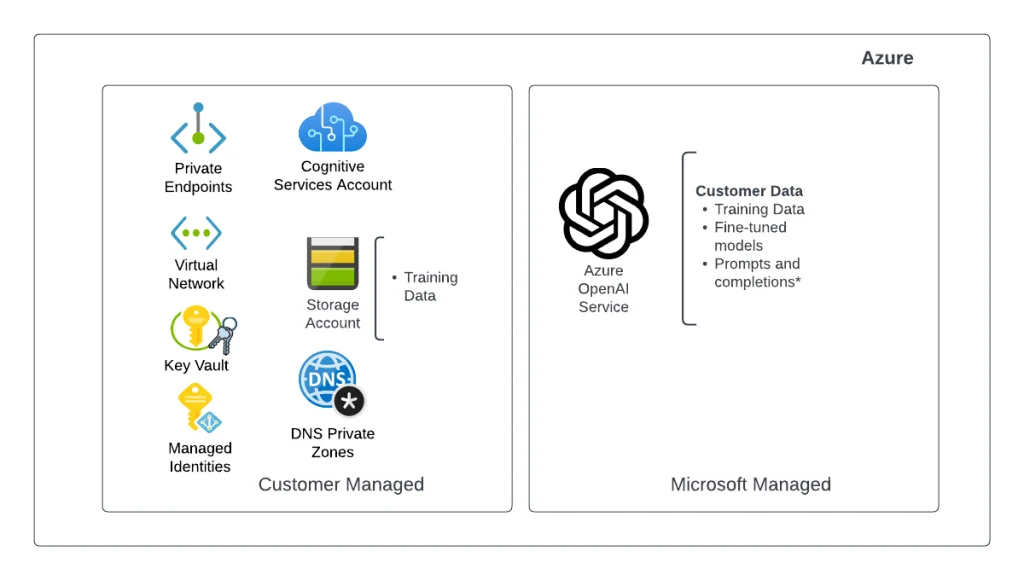
The Azure Open AI Service - Source: Journey of the Geek.
5. Predictive analytics #
Predictive analytics enables businesses to forecast future trends and behaviors. Microsoft Fabric brings this predictive capability to businesses with Azure Synapse Analytics, allowing them to proactively anticipate and prepare for upcoming trends and events.
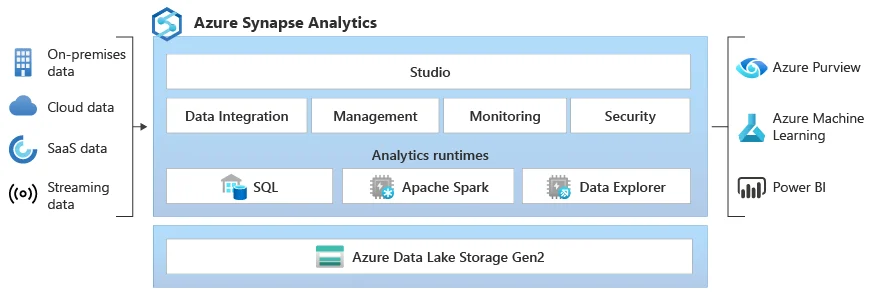
Azure Synapse Analytics - Source: Microsoft.
How Kepro uses Text Analytics to extract insights
Kepro, a healthcare consulting firm, uses Text Analytics from Azure Cognitive Services for efficient and accurate extraction of essential information from large case histories.
Microsoft Fabric can enhance this process through its unified data lake, OneLake, and associated services like Azure Synapse Analytics, Azure Databricks, and Power BI. This will streamline healthcare data management, reduce data duplication, and lower storage costs.
6. Business intelligence and reporting #
Effective strategic decision-making is dependent on Business Intelligence (BI) and Microsoft Fabric supports this need using Power BI.
Moreover, Power BI’s Copilot feature will enable efficient analysis of data and generate detailed reports.
By leveraging OneLake and the Direct Lake mode, Microsoft Fabric optimizes query performance and enables real-time access to large datasets with Delta Lake logs and Parquet files. This capability further improves how you analyze and use vast amounts of data.
Case studies from the insurance and client care sectors
Insurance sector #
Through PowerBI alone, insurance companies (such as Influential) already manage to streamline claims management, improve risk management, enhance underwriting, gain valuable customer insights, and boost efficiency.
Microsoft Fabric could indirectly support these areas by enhancing the user interface and user experience of the Power BI dashboards and reports.
This is an insurance report auto-generated by Power BI Service if you click the "Quick Insights" option. Microsoft Fabric is amazing... whew!
— Bambi🌻 (@_NafulaC) June 9, 2023
You don't have to do these visualizations on your own...Quick insights tool is one of AI capabilities in Power BI to make life easier. pic.twitter.com/T2HBFmTZma
PowerBI + Microsoft Fabric = Autogenerated insurance reports. - Source: Twitter
Client care sector #
In the client care sector, businesses (such as CureMD) were gaining insights into client satisfaction, complaint distribution, and complaint handling through PowerBI. The tool provided information, such as the number of clients, complaints, brokers, reimbursements, and average days to resolve complaints.
Microsoft Fabric and Copilot could take the entire process a step further, enhancing how data is handled and insights are derived.
For example, Fabric’s unified platform could allow businesses to integrate and analyze client satisfaction data, complaint distribution data, and complaint handling data from different sources.
The Data Activator feature (known to be coming soon) could be used to set up automatic alerts for significant changes in this data, such as a spike in complaints. Meanwhile, Copilot could help stakeholders to generate reports on these topics by asking a question or describing the desired insights.
Almost missed this announcement. Part of Microsoft Fabric. Activator sort of reminds me of SQL Notification Services (in concept) but against gargantuan data sets. #MSBuild #MicrosoftBuild2023 @MicrosoftFabric pic.twitter.com/OY6crPQdXY
— JERRY NIXON 🖖 (@jerrynixon) May 24, 2023
Microsoft Fabric’s Data Activator aka SQL Notification Services for large data sets. - Source: Twitter
7. Data governance and security #
In a world where data breaches are increasingly common, robust governance and security practices are critical in maintaining the integrity and confidentiality of your data.
The Fabric platform is to be deeply integrated with other Microsoft products. So, it is designed with built-in security, governance, and compliance mechanisms.
Microsoft Fabric goes a step further with OneLake, which is a unified layer for data management and governance.
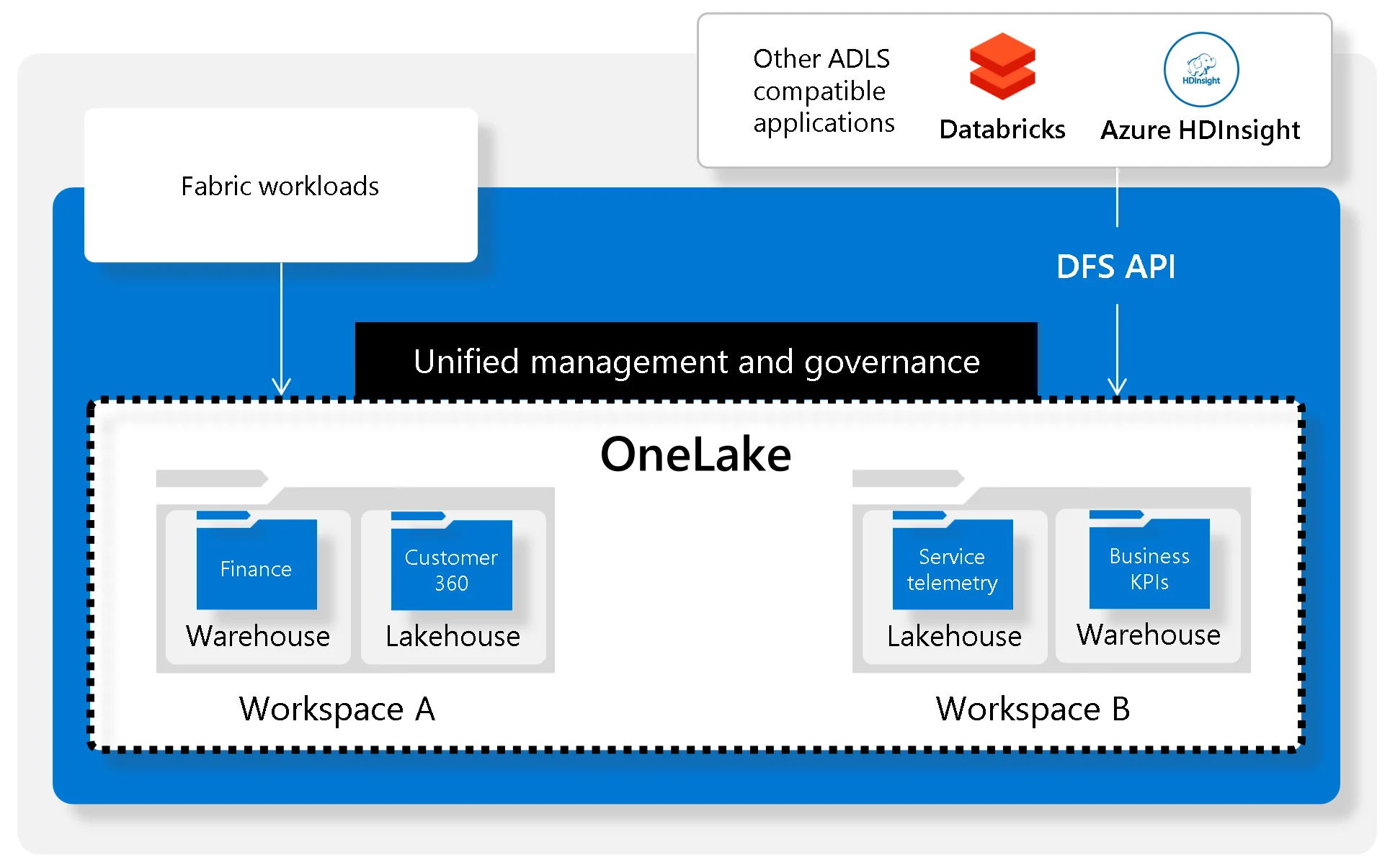
Govern your data lake through OneLake - Source: Microsoft.
This feature with #MicrosoftFabric will be a huge help to data governance:https://t.co/7YAedxnONH
— John Kerski (@JKerski) June 8, 2023
The concept of an Enterprise Data Model is a major endeavor for orgs & bringing your existing data lakes together without duplication (which you want to avoid) is impactful. https://t.co/aVKsPGlOVc
OneLake is all you need for data governance of your Microsoft Fabric data assets. - Source: Twitter
The future of Microsoft Fabric #
Microsoft Fabric aims to be an all-encompassing analytics platform that caters to the diverse needs of enterprise data practitioners.
Looking ahead, Microsoft has ambitious plans for Fabric, including continued investment in AI technologies. These investments aim to redefine the tools and methods employed by developers, as well as shape the future of work by harnessing the transformative potential of AI.
In future iterations, Microsoft Fabric is poised to leverage AI even further with its AI-powered assistant, i.e., Copilot to simplify tasks such as building data pipelines and generating code.
Microsoft Fabric also has the potential to enhance its data visualization capabilities further to create dynamic and interactive visual representations of data. This would enable users to explore data from various perspectives, unveil hidden patterns, and identify real-time trends.
Simply use TSQL to merge data between your lakehouse and data warehouse. If you are using #MicrosoftFabric this is the reality. No dataframes, no Spark, just TSQL.
— Steve Howard (@AngryAnalytics) June 1, 2023
Read more about Synapse DW in Microsoft Fabric here: https://t.co/enWmqlyLVN pic.twitter.com/7vkBfV5F1z
Using T-SQL in Fabric to combine multiple datasets into a unified and comprehensive view. - Source: Twitter
Wrapping up #
In conclusion, Microsoft Fabric’s use cases aim to encompass a wide range of applications, including data integration, warehousing, data science and machine learning, real-time and predictive analytics, BI and reporting, and more.
The platform’s future plans include leveraging AI technologies, streamlining IoT data management, and enhancing data visualization capabilities. So, the use cases will keep evolving with each new update to Fabric.
Microsoft Fabric use cases: Related reads #
- Microsoft Fabric 101: A Comprehensive Overview of Microsoft’s New Data Platform
- What Is a Data Catalog? & Do You Need One?
- AI Data Catalog: Exploring the Possibilities That Artificial Intelligence Brings to Your Metadata Applications & Data Interactions
- 8 Ways AI-Powered Data Catalogs Save Time Spent on Documentation, Tagging, Querying & More
- 15 Essential Data Catalog Features to Look For in 2023
- What is Active Metadata? — Definition, Characteristics, Example & Use Cases
- Data catalog benefits: 5 key reasons why you need one
- Open Source Data Catalog Software: 5 Popular Tools to Consider in 2023
- Data Catalog Platform: The Key To Future-Proofing Your Data Stack
- Top Data Catalog Use Cases Intrinsic to Data-Led Enterprises
- Business Data Catalog: Users, Differentiating Features, Evolution & More
Share this article









